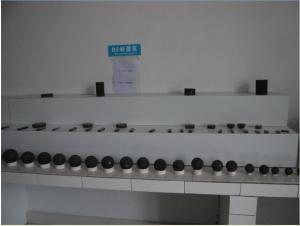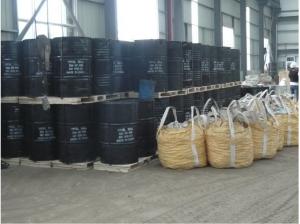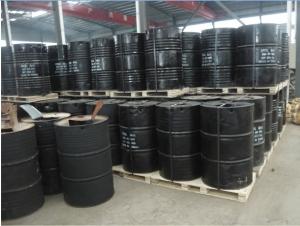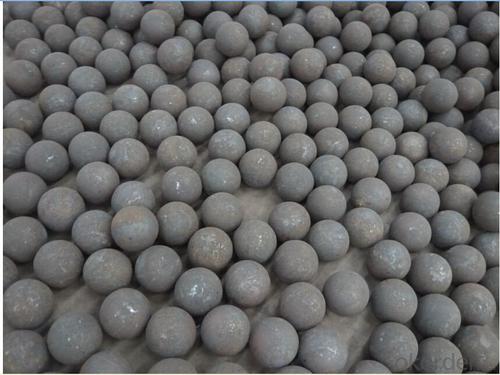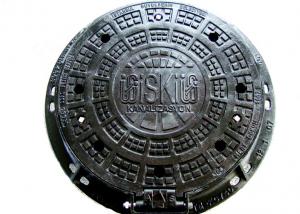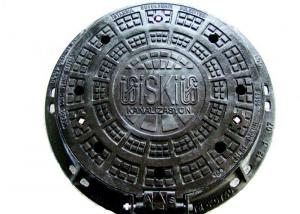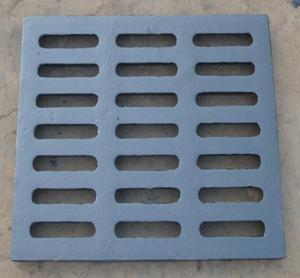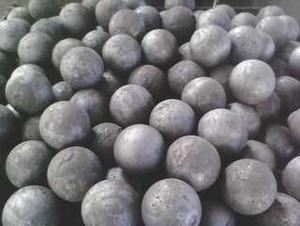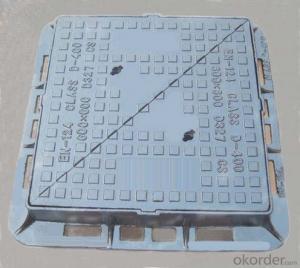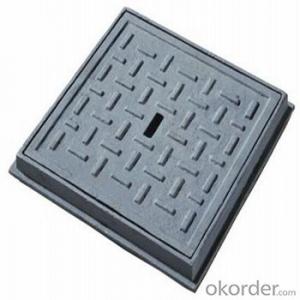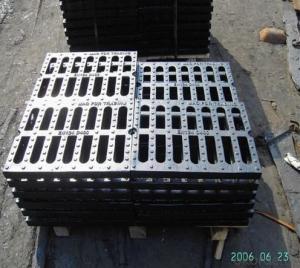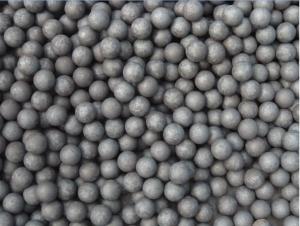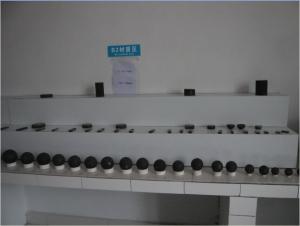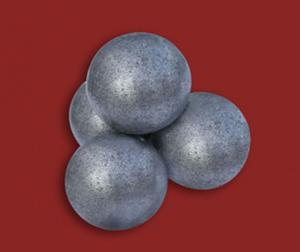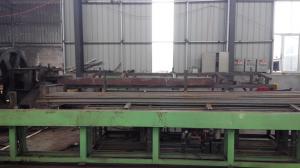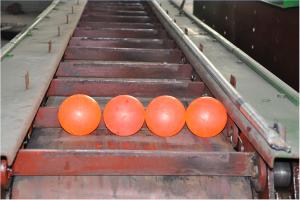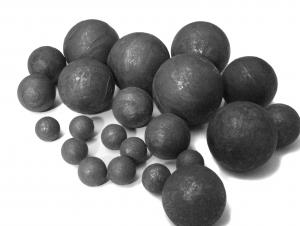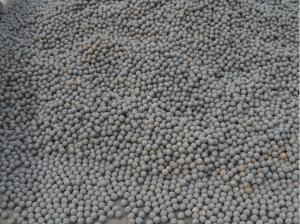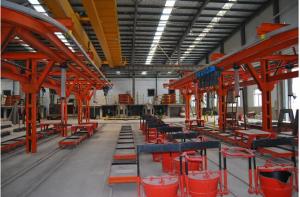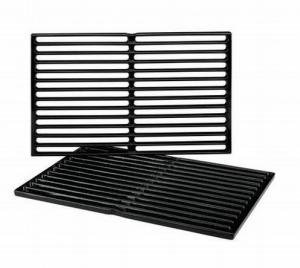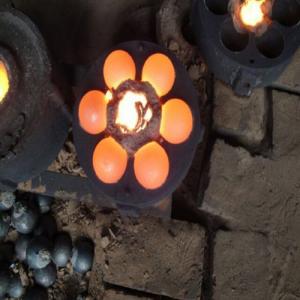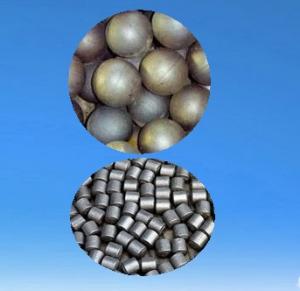Steel Grinding Ball With High Hardness & Good Wear-Resistance & No Breaking
- Loading Port:
- Qingdao
- Payment Terms:
- TT or LC
- Min Order Qty:
- 25M.T. m.t.
- Supply Capability:
- 150,000M.T. m.t./month
OKorder Service Pledge
OKorder Financial Service
You Might Also Like
Production Description:
Introduction of Steel Grinding Ball With High Hardness & Good Wear-Resistance & No Breaking:
Steel Grinding Ball is the pulverizing material used in ball mill as a grinding meda.
Steel Grinding Ball is wildly used in a) Metal Mines, b) Cement Plants, C) Water Coal Surry, d) Power Stations, e) Chemical Industry.
Steel Grinding Ball is consumables with big demands in worldwide.
Data Sheet for Steel Grinding Ball with High Hardness & Good Wear-Resistance & No Breaking
1) Main Specification of Steel Grinding Ball:
Size: 15-150mm
Hardness: 55-65HRC
Breakage Rate<0.5%
Impact Tough>12J/CM2
Endurance Test>20000times
2) Chemical Composition of Steel Grinding Ball:
Material | C | Mn | Si | Cr | S | P | Cu | Mo |
45# | 0.42-0.50 | 0.50-0.80 | 0.17-0.37 | 0.25 | - | - | 0.25 | 0.30 |
50Mn | 0.48-0.56 | 0.70-1.00 | 0.17-0.37 | 0.25 | - | - | 0.25 | 0.30 |
60Mn | 0.57-0.65 | 0.70-1.00 | 0.17-0.37 | 0.25 | - | - | 0.25 | 0.30 |
65Mn | 0.62-0.70 | 0.90-1.00 | 0.17-0.37 | 0.25 | - | - | 0.25 | 0.30 |
B-1 | 0.52-0.65 | 0.60-1.20 | 0.17-0.37 | 0.25max | 0.035max | 0.035max | - | - |
B-2 | 0.50-0.80 | 0.60-0.80 | 0.17-0.37 | 0.90-1.10 | 0.035max | 0.035max | - | - |
B-3 | 0.72-0.92 | 0.70-1.00 | 0.17-0.37 | 0.50-0.90 | 0.035max | 0.035max | - | - |
3) Physical Property of Steel Grinding Ball:
Diameter |
Hardness (HRC) |
Broken rate |
Impact value |
Falling ball number |
Microstructure
|
15-150MM | ≥45 | 1% | 12 | 12000 | M+C |
15-150MM | ≥50 | 1% | 12 | 12000 | M+C |
15-150MM | ≥58 | 0.5% | 15 | 15000 | M+C |
15-150MM | ≥62 | 0.5% | 15 | 15000 | M+C |
15-150MM | ≥50 | 0.5% | 15 | 15000 | M+C |
15-150MM | ≥58 | 0.5% | 15 | 15000 | M+C |
15-150MM | ≥65 | 0.5% | 15 | 15000 | M+C |
4) Process of Production of Steel Grinding Ball:
(1).Raw material
(2).Cutting
(3).Heating
(4).Forging
(5).Quenching
(6).Tempering
(7).Testing
(8).Qualified Products
(9).Packing
Packing of Steel Grinding Ball:
1) Container bags, each one can load 1000kgs
2) Drums, each one can load 800-900kgs
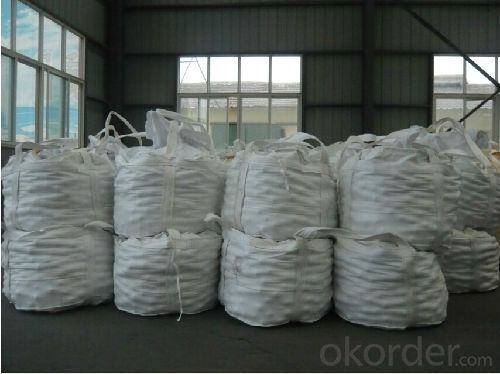
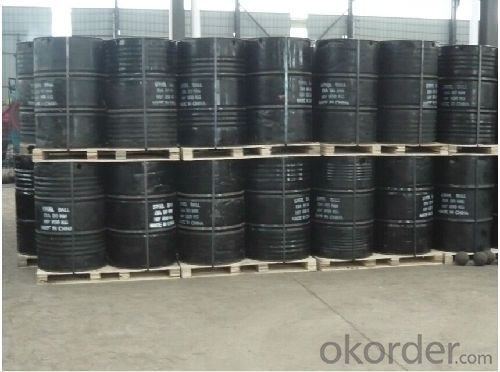
- Q: How to improve the surface roughness of casting parts?
- One is to improve the accuracy of the model; the two is to improve the molding sand mesh. How much is the other relationship?.
- Q: What is normalizing, annealing, tempering, quenching? What is the difference between forging parts and casting parts?
- According to the requirements of the workpiece annealing, there are many kinds of annealing process specifications, such as full annealing, spheroidizing annealing and stress relieving annealing. Steel the steel quenching is heated to the critical temperature Ac3 (hyposteel) or Ac1 (hypereutectoid steel) above a certain temperature, holding time, so that all or part of 1 Austenitic, then the cooling rate is greater than the critical cooling rate of fast cooling to below Ms (or near Ms isothermal) of martensite the body (or bainite transformation) heat treatment process. Aluminum alloys, copper alloys, titanium alloys, tempered glass and other materials are usually treated by solid solution or heat treatment with rapid cooling process. Tempering is a heat treatment process where the workpiece is hardened and heated to a temperature below AC1, which remains cool for a certain period of time and then cools to room temperature. Tempering generally followed by quenching, the purpose is: (a) to eliminate the residual stress caused by quenching, prevent deformation and cracking; (b) hardness, strength, plasticity and toughness of workpiece is adjusted, to use performance requirements; (c) the size of organization and stability, ensure the accuracy improvement; (D) and to improve the processing performance. Tempering is therefore the last important step in obtaining the desired properties of the workpiece. According to the tempering temperature range, tempering can be divided into low temperature tempering, medium temperature tempering and high temperature tempering. This answer is recommended by the questioner
- Q: Selection of hydraulic press is the casting parts and steel plate welding, how to choose?
- Casting parts in one shape, the overall processing in this regard than steel plate welding better. The same price is much more expensive than steel. Large hydraulic presses seldom have casting parts.
- Q: I often see Waixiejiagong drawings, casting, how to distinguish the latheman.
- What you say is the difference between rough drawing and processing drawingThere must be a difference between the rough drawings and the rough ones
- Q: What is the reason for 304 stainless steel precision casting parts to be changed?
- 304 stainless steel is easier to change than ordinary steel. Because the 304 heat conductivity is lower than that of the low doped steel, the temperature is even more uneven, and 20% of the non ferrous elements also make the distribution of internal and external elements more uneven, hard and soft inside. Each of these two produces greater internal stresses, resulting in a variant.
- Q: The difference between cement sand castings, resin sand castings and vacuum casting parts
- The clay wet sand castings casting weight from a few kilograms until tens of kilograms, but the clay dry type of casting production can be weighed dozens of tons.For medium and large castings, cast iron, cast steel can be self hardening sand with resin can be water glass sand production, can obtain the precise size, smooth surface castings, but casting precision, surface roughness, density and microstructure, mechanical properties and material cost of sand casting production is often poor, so when the higher performance requirements of castings, should adopt other casting methods, such as casting (lost wax casting), die casting, low pressure casting.
- Q: How to cast iron and wrought iron collocation
- 2, listen: Pig beating sound boring, wrought iron beating sound loud.
- Q: What are the causes of pitting on the surface of a precision casting?
- The quality of the shell surface is out of order. Or shot blasting out of question.
- Q: Why should pig iron be used in casting?
- Not necessarily is iron, steel, stainless steel, aluminum, copper can be cast iron, is cheaper, and better properties of cast out, for example, is not easy to rust, high strength, easy processing and so on, and is the only iron iron cast out, it is not necessarily the raw pig iron, plus some other material
- Q: Lathe processing stainless steel casting parts to use what type of tool, the speed into the amount of how much tool angle
- There is YW1 best, if not using YG6X, YG8 is ok!The speed should not be high, the greater the diameter, the lower the speed! For example, a diameter of 100 mm, speed is not greater than 80 rpm, each point is good!The main tool is the front angle to be larger, more than 6 degrees, and the groove should be wider and larger to reduce the cutting resistance! When the rear angle is properly reduced and the strength is increased, it is recommended to take 3 degrees.The main components are: spindle box, exchange gear box, feed box, slide box, tool post, tail frame, light bar, lead screw, bed, foot and cooling device.Spindle box: also known as the headstock, it is the main task of the rotary motion of the main motor came through the transmission mechanism of a series of positive and negative spindle to be required two different steering speed, the spindle box gives impetus to the movement of the box. Medium spindle is the key part of lathe. The stability of the spindle on the bearing directly affects the quality of the workpiece. Once the rotation accuracy of the main shaft is reduced, the value of the machine tool will be lowered.
1. Manufacturer Overview
| Location | Zhangqiu, China |
| Year Established | 1995 |
| Annual Output Value | 150,000M.T. |
| Main Markets | 40%,South America; 30%,South Africa; 15%,Southeast Asia; 5%, Europe Area; 5%, North America; 5%, Other Areas |
| Company Certifications | ISO9001:2008;SGS Test Report |
2. Manufacturer Certificates
| a) Certification Name | |
| Range | |
| Reference | |
| Validity Period |
3. Manufacturer Capability
| a) Trade Capacity | |
| Nearest Port | Qingdao;Tianjin |
| Export Percentage | |
| No.of Employees in Trade Department | 25 |
| Language Spoken: | English, Chinese |
| b) Factory Information | |
| Factory Size: | 68,000m2 |
| No. of Production Lines | 15 |
| Contract Manufacturing | |
| Product Price Range | $700/M.T.-$1200/M.T. |
Send your message to us
Steel Grinding Ball With High Hardness & Good Wear-Resistance & No Breaking
- Loading Port:
- Qingdao
- Payment Terms:
- TT or LC
- Min Order Qty:
- 25M.T. m.t.
- Supply Capability:
- 150,000M.T. m.t./month
OKorder Service Pledge
OKorder Financial Service
Similar products
Hot products
Hot Searches
Related keywords

